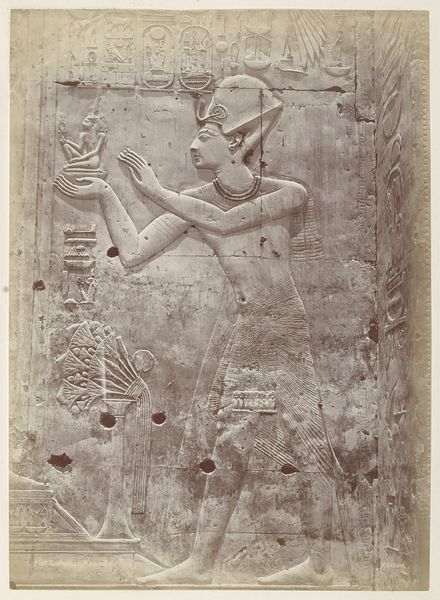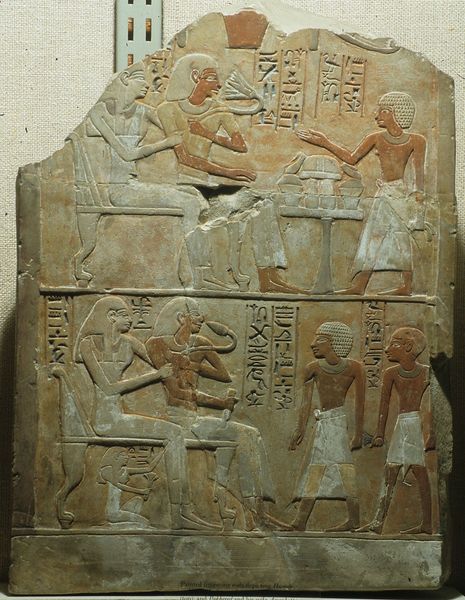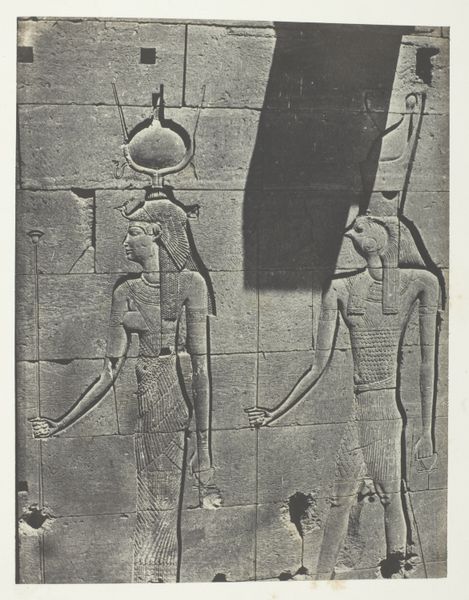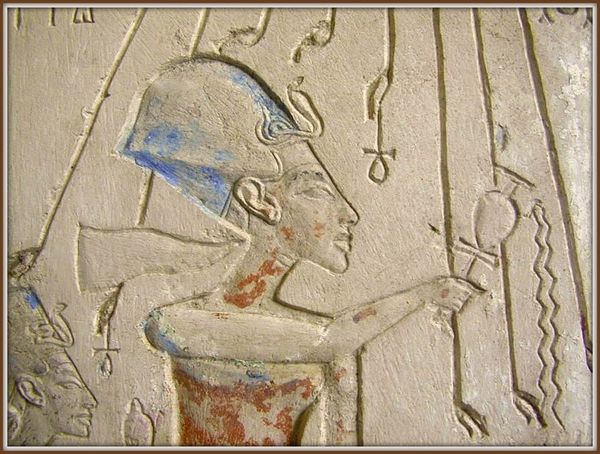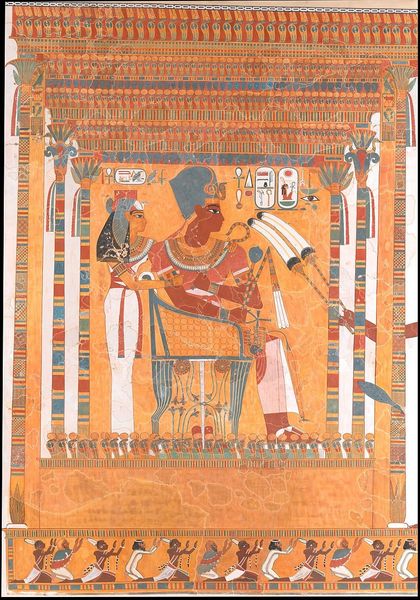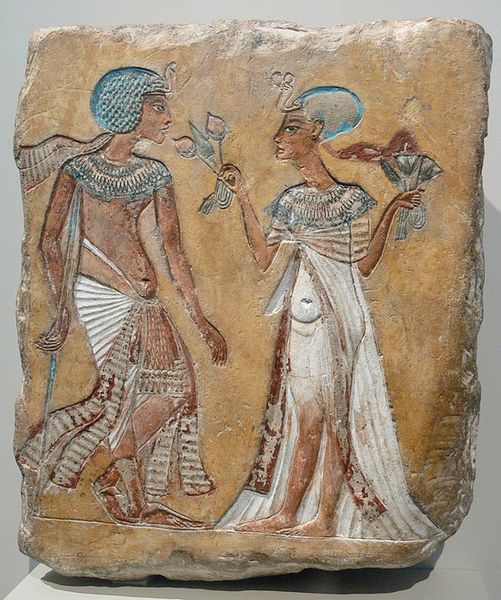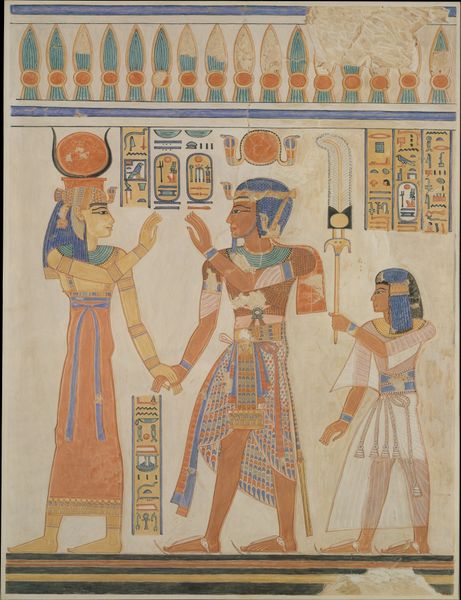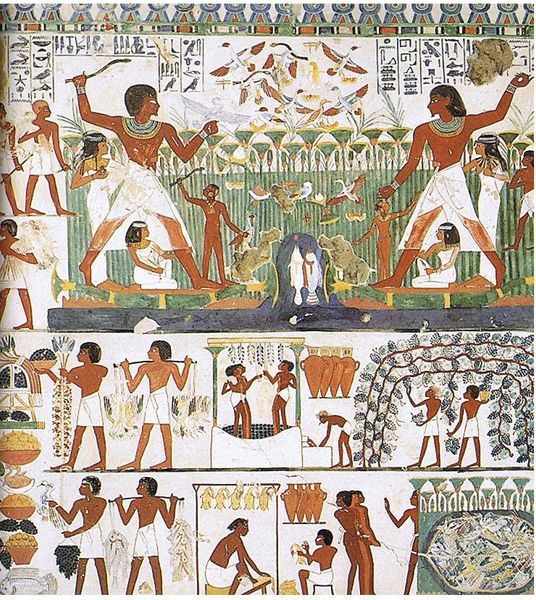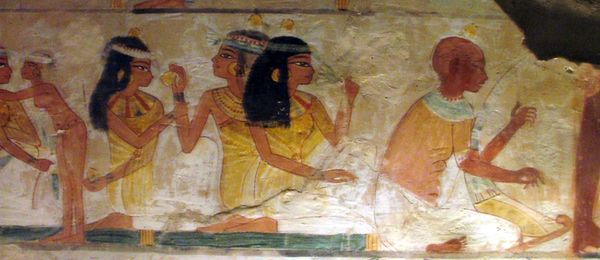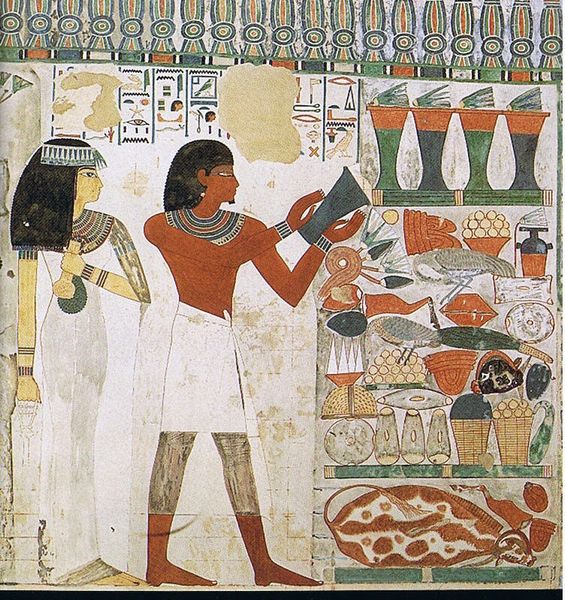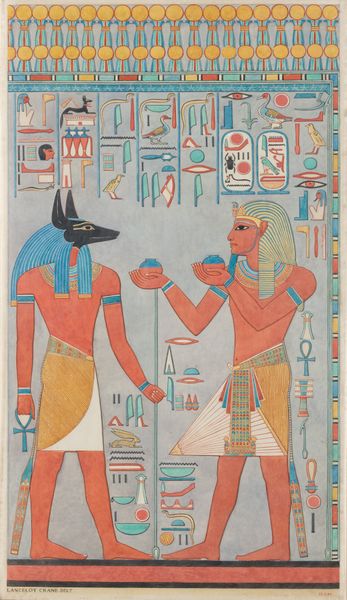
relief
#
portrait
#
relief
#
ancient-egyptian-art
#
figuration
#
ancient-mediterranean
#
history-painting
Copyright: Public domain
Editor: Here we have a relief carving of Akhenaten, Nefertiti, and two of their daughters adoring the Aten. It dates all the way back to 1350 BC! The figures, rendered in a very distinct style, seem to almost float within the carved space. How do you read the composition of this piece? Curator: A formalist reading compels us to consider the relationships of forms, lines, and textures. The composition seems to enact a sort of symbolic movement: from the sun disc, the source, down through the attenuated rays, culminating in the figures below. Note the careful balance— the verticality of the figures offset by the circular form above. Editor: The sun disk is really visually striking; are the hieroglyphs and the rays coming down just decoration? Curator: The rays terminating in hands suggest a divine agency and active connection between the Aten and the royal family. Look at how they cradle Ankh symbols. And no, not just decoration – those glyphs offer another textual layer, ripe with symbolic meaning. These aren’t just pretty pictures. What impression do you have from these? Editor: I see that some of the figures, including the two daughters, are miniature versions of Akhenaten and Nefertiti. Curator: Precisely. This repetition creates visual harmony and perhaps signifies a shared essence or destiny. We could say, structurally speaking, this reinforces their bond. This familial resemblance, formally repeated throughout the work, emphasizes royal power through visual cohesion. Note the way this artistic technique enforces symbolic order. Editor: So, focusing on the formal qualities can tell us about the social hierarchy and beliefs encoded within the piece? I hadn't really noticed the relationship between line, form, and symbolic message before. Thank you!
Comments
No comments
Be the first to comment and join the conversation on the ultimate creative platform.
